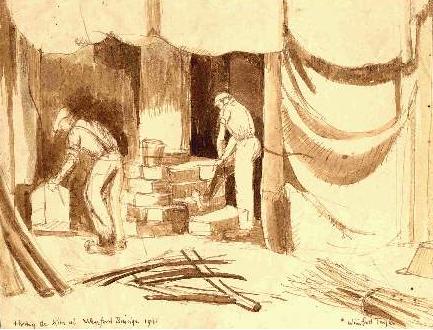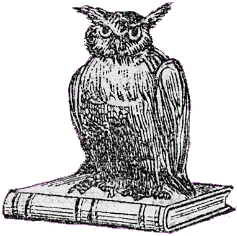Josiah Wedgewood

 A Staffordshire potter who
had an attack of smallpox as a child, resulting in the loss of
his right leg. This left him unable to use a potter's wheel,
insead the young Wedgewood read about his craft, and started to
carry out research. When he opened his own works, the business
expanded rapidly, as he intorduced new working practices dividing
labour and aiming for better finishes and quality to his products
than his rivals. The better quality lead his to become the
supplier of royal dinnerware to Queen Charlotte, with royal
endorsement his wares became standard dinnerware and opened up a
world wide market. By now Wedgewood had enough money to open up
his own factory close to Stoke on Trent, building a villiage for
his workers, and funding a canal to allow safe transport of the
goods out of the factory, by the standards of the time he was an
excellent employer and was activly involved in the campaign
against the slave trade.
A Staffordshire potter who
had an attack of smallpox as a child, resulting in the loss of
his right leg. This left him unable to use a potter's wheel,
insead the young Wedgewood read about his craft, and started to
carry out research. When he opened his own works, the business
expanded rapidly, as he intorduced new working practices dividing
labour and aiming for better finishes and quality to his products
than his rivals. The better quality lead his to become the
supplier of royal dinnerware to Queen Charlotte, with royal
endorsement his wares became standard dinnerware and opened up a
world wide market. By now Wedgewood had enough money to open up
his own factory close to Stoke on Trent, building a villiage for
his workers, and funding a canal to allow safe transport of the
goods out of the factory, by the standards of the time he was an
excellent employer and was activly involved in the campaign
against the slave trade.
Josiahs' experimental ability lead him to develope a vasta
rray of new ceramic materials, most notably the development of
jasperware, stands as one of his greatest achievments as unlike
previous research jasperware wasn't an improvement to an existing
material and was a completly new. He was very secretive about his
research, to avoid the competiton finding out that he was
experimenting with barium sulphate, he had it sent to london,
ground up, then sent to him in Stoke as a powder. After 4 years
of experimenting finially he obtained something he was satisfied
with, combining sulphates and carbonates of barium to a
porecelian clay, and then using transistion metal oxides to
obtain desired colours (most commonly blue, but pale greens,
pinks and liliac weer also obtained), jasperware was born. The
success of Jasperware was that its was hard and. it didn't need
to be glazed before firing. Becoming very fashionable among those
who could afford it.
 One of the biggest problems for Wedgewood, was the
firing process. If the furnace was to hot or to cold the pots
would crack or be otherwise spoilt, pots were being fired on the
order of hunderds in the same kiln if the firing wasn't right a
lots of time and money was wasted. The problem was that there was
no accurate method of determining the temperature of the kiln. To
solve this Wedgewood invented the pyrometer. For this, and his
other research he was elected a member of the Royal Society. His
discussions with members of the lunar society certainly shaped
and developed his social and scientific ideas.
One of the biggest problems for Wedgewood, was the
firing process. If the furnace was to hot or to cold the pots
would crack or be otherwise spoilt, pots were being fired on the
order of hunderds in the same kiln if the firing wasn't right a
lots of time and money was wasted. The problem was that there was
no accurate method of determining the temperature of the kiln. To
solve this Wedgewood invented the pyrometer. For this, and his
other research he was elected a member of the Royal Society. His
discussions with members of the lunar society certainly shaped
and developed his social and scientific ideas.

main image of josiah wedgewood
from: http://illustratorarchive.com/Pages/IA-GreatLovers.htm
firing the kiln from:
http://www.wenfordbridge.com/wenford.htm

 A Staffordshire potter who
had an attack of smallpox as a child, resulting in the loss of
his right leg. This left him unable to use a potter's wheel,
insead the young Wedgewood read about his craft, and started to
carry out research. When he opened his own works, the business
expanded rapidly, as he intorduced new working practices dividing
labour and aiming for better finishes and quality to his products
than his rivals. The better quality lead his to become the
supplier of royal dinnerware to Queen Charlotte, with royal
endorsement his wares became standard dinnerware and opened up a
world wide market. By now Wedgewood had enough money to open up
his own factory close to Stoke on Trent, building a villiage for
his workers, and funding a canal to allow safe transport of the
goods out of the factory, by the standards of the time he was an
excellent employer and was activly involved in the campaign
against the slave trade.
A Staffordshire potter who
had an attack of smallpox as a child, resulting in the loss of
his right leg. This left him unable to use a potter's wheel,
insead the young Wedgewood read about his craft, and started to
carry out research. When he opened his own works, the business
expanded rapidly, as he intorduced new working practices dividing
labour and aiming for better finishes and quality to his products
than his rivals. The better quality lead his to become the
supplier of royal dinnerware to Queen Charlotte, with royal
endorsement his wares became standard dinnerware and opened up a
world wide market. By now Wedgewood had enough money to open up
his own factory close to Stoke on Trent, building a villiage for
his workers, and funding a canal to allow safe transport of the
goods out of the factory, by the standards of the time he was an
excellent employer and was activly involved in the campaign
against the slave trade. One of the biggest problems for Wedgewood, was the
firing process. If the furnace was to hot or to cold the pots
would crack or be otherwise spoilt, pots were being fired on the
order of hunderds in the same kiln if the firing wasn't right a
lots of time and money was wasted. The problem was that there was
no accurate method of determining the temperature of the kiln. To
solve this Wedgewood invented the pyrometer. For this, and his
other research he was elected a member of the Royal Society. His
discussions with members of the lunar society certainly shaped
and developed his social and scientific ideas.
One of the biggest problems for Wedgewood, was the
firing process. If the furnace was to hot or to cold the pots
would crack or be otherwise spoilt, pots were being fired on the
order of hunderds in the same kiln if the firing wasn't right a
lots of time and money was wasted. The problem was that there was
no accurate method of determining the temperature of the kiln. To
solve this Wedgewood invented the pyrometer. For this, and his
other research he was elected a member of the Royal Society. His
discussions with members of the lunar society certainly shaped
and developed his social and scientific ideas.